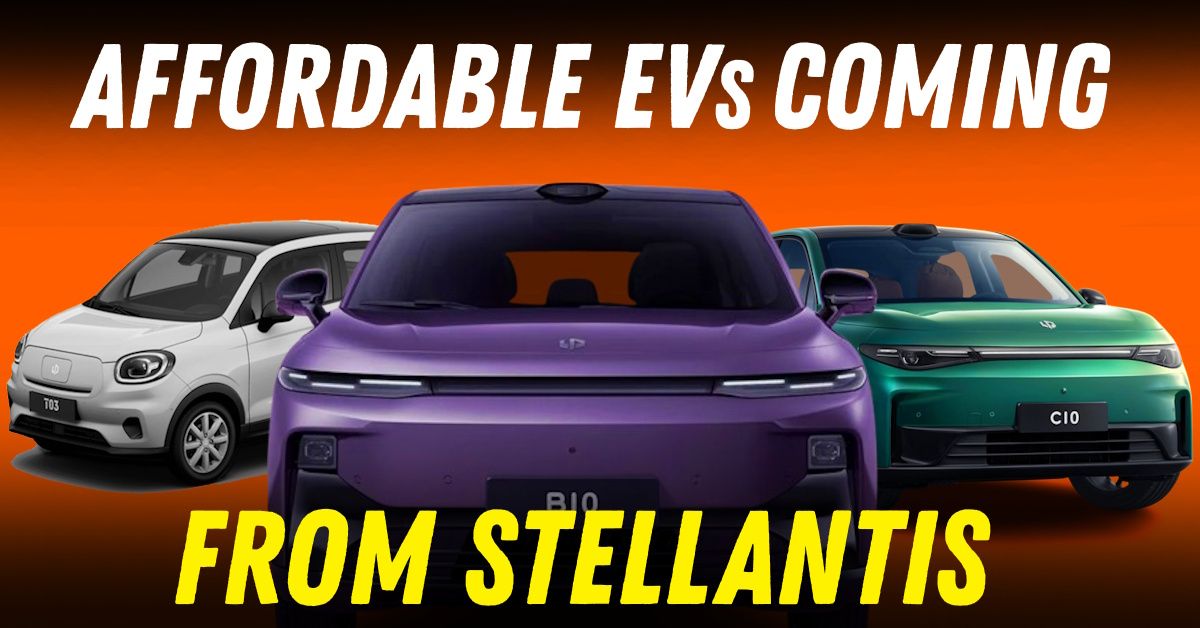New Affordable EVs From Jeep (Stellantis) Coming Soon To India: Details


Stellantis, the global auto giant behind brands like Jeep and Citroën, is set to introduce the Chinese electric vehicle (EV) marque Leapmotor in India by the end of 2024. The move signals a new chapter in India’s fast-evolving EV space, adding another name to a growing list of international brands eyeing a share of this expanding market.
Founded in 2015, Leap Motor has carved out a reputation for innovation in the global EV space. The brand sold nearly 3 lakh vehicles globally in 2024, doubling its numbers from the year before. A key highlight of Leap Motor’s technological edge is its cell-to-chassis (CTC) battery design, which integrates the battery directly into the vehicle’s structure—enhancing both safety and space efficiency.
Its line-up includes the compact T03 hatchback and two SUVs—the C10 and the B10—all of which come with smart driving tech and active safety features. While the brand is relatively unknown in India today, its global trajectory and Stellantis’ backing could help it quickly find relevance.
With India now the world’s third-largest car market and EV sales steadily rising, the timing appears right. In FY24, electric passenger vehicles saw an 11% year-on-year jump, and more than 2 million EVs were sold across categories. While Tata Motors currently dominates the EV passenger car segment, growing interest in both affordable and tech-rich models has created space for new contenders.
Stellantis already has a presence in India with Citroën and Jeep, and sees Leap Motor as a way to tap into rising demand for feature-rich EVs. According to Shailesh Hazela, the CEO of Stellantis India, the company aims to offer “premium EVs for upwardly mobile consumers—vehicles that combine technology, comfort and sustainability.”
Stellantis has not yet revealed the specific models for India, but industry reports suggest the T03 hatchback and one of the brand’s compact SUVs—possibly the B10 or C10—could be early entrants.
The T03 is a city-focused hatch powered by a 37.3 kWh battery, with a WLTP-certified range of 265 km. It comes with features like advanced driver assistance systems and a connected infotainment interface. In international markets, it competes with entry-level EVs like the Dacia Spring and offers a strong mix of tech and value.
On the SUV front, the B10 has recently made waves in China for packing in lidar-based driver assistance systems and a clean, tech-forward cabin—at a price lower than many mainstream rivals.
One of the most important aspects for potential customers will be pricing—and that depends largely on whether Stellantis chooses to import or assemble Leapmotor vehicles locally. CBU imports attract steep duties, often pushing EV prices beyond reach.
Stellantis has hinted that it may use its existing production facilities in Tamil Nadu to assemble Leapmotor EVs if the business case supports it. Local assembly would not only help pricing but also signal long-term commitment to the Indian market.
The EV space is no longer limited to just offering an electric alternative. Customers today expect good design, modern features, strong range, and a connected experience. Leap Motor’s CTC battery tech and driver-assist features could help it stand out in a segment where newer brands often struggle with differentiation.
Stellantis also plans to position Leap Motor as a premium offering, suggesting it will aim for a more tech-forward customer rather than going after purely price-conscious segments. In this sense, Leap Motor could appeal to those seeking something smarter and more stylish than the average entry-level EV.
The timing for Leap Motor’s arrival coincides with a supportive policy environment. The Union Budget for 2025–26 significantly increased funding for electric mobility and introduced fresh incentives for EV manufacturing and component localisation. These measures are designed to reduce costs, boost domestic production, and strengthen supply chains.
But despite the tailwinds, challenges remain. As Leap Motor’s CEO Zhu Jiangming has acknowledged, the Indian market is tough to crack. Brand recognition is low, price sensitivity is high, and competition from established players like Tata, MG and Hyundai is fierce. Getting the product mix, pricing strategy and service support right will be critical for Stellantis to make Leapmotor a success story in India.
Over the next few quarters, expect more clarity on:
• Model Line-up: The compact T03 and a tech-rich SUV could be the first to arrive.
• Pricing: Locally assembled models may be more affordable, though premium positioning could still place them above entry-level EVs.
• Tech Features: CTC battery architecture, ADAS, and connected car interfaces are likely highlights.
• Sales and Service: Existing Jeep and Citroën dealership networks may be used to support Leapmotor’s rollout.
The Indian auto market is notoriously difficult to crack, and for a relatively unknown brand like Leap Motor, the challenge is even greater. Success often hinges on exceeding expectations—either through standout features or aggressive pricing. That’s the playbook followed by companies like MG Motor and BYD, which entered with limited brand recall but managed to carve a space by offering strong value and loaded feature sets. Whether Leap Motor can adopt a similar strategy—or bring something even more distinctive to the table—remains to be seen.